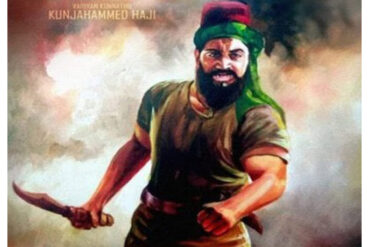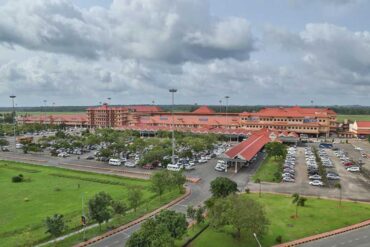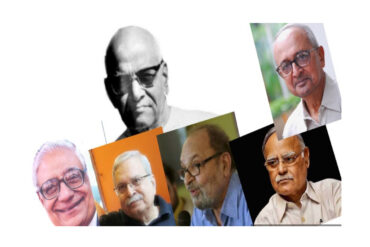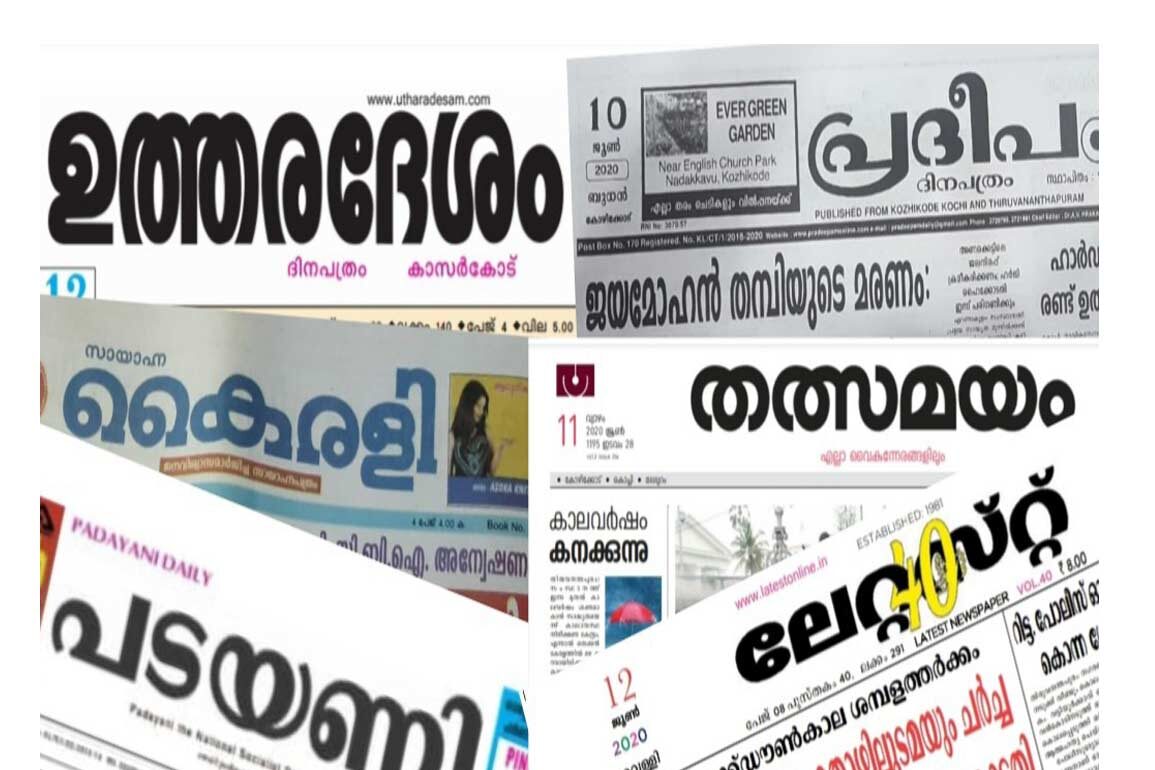In the mid-1990s, one can say without an iota of exaggeration that virtually everyone on the streets in Kerala had a penchant for choodulla vaarthakal (hot news), especially in the afternoons. The surroundings of bus stations, railway stations and wherever there were crowds, especially busy commercial areas, the yelling newspaper vendors were a common sight.
Many evening dailies, most of them tabloids, flourished in news-crazy Kerala, in the cities of Kochi, Thiruvananathapuram and Kozhikode, and some district capitals, particularly Kottayam. Though very small in both size and population compared to the cities, Kottayam continues to have an illustrious tradition and history in the publishing map of the state. It’s no wonder the most widely circulated eveninger of Kerala continues to be headquartered there.
However, things are far from rosy these days for the newspapers everywhere, particularly the afternoon tabloids, most of them printed from facilities not belonging to the publishers. Inquiries found many such eveningers have not been able to resume so far as life continues to be far from normal in the wake of Covid pandemic.
Over the last four decades, Kochi city has seen the birth and exit of no less than a dozen afternoon newspapers, some which lasted barely a few months. Recalls Bonnie Thomas, regarded as one of the best known chroniclers of Kochi, “During my St Albert’s College days, no day was complete for us without going through two or three afternoon tabloids. Virtually every second day we used to find some scoop which no major newspaper dared to report.”
Now that the reading habits of the city residents have undergone sweeping changes, most of the small afternoon newspapers which survived on shoestring budgets, usually with cheaper government tenders and notices along with a handful of local ads have collapsed one after another and their patronage has fallen to abysmally low levels. “Nowadays, only a handful of afternoon newspapers are in the field while a vast majority of such papers have gone into the oblivion,” says Alexander Sam, a widely respected journalist, who once served in senior positions in the 133-year-old Deepika newspaper.
While sharing similar concerns, political commentator and writer, Ajayan Ochanthuruthu, felt the afternoon dailies were victim of the changes in habits of people, especially those residing in Kerala’s cities. Social media and breaking news on television channels and the rising operational costs have taken a heavy toll on such newspapers which no doubt had an enviable position in the minds of people some 25 years ago. The proliferation of online news portals and FB pages of smaller towns and panchayats towards the end of 2000s apparently hit their operations heavily. “The presence of alternative platforms like social media and online news portals featuring regular or hourly updates of developments and, other factors like the downward trend in many businesses in recent years at local and regional levels too adversely affected all newspapers, leave alone smaller tabloids published in the afternoons,” says Ochamthuruthu, who had a brief stint in one tabloid.
Besides front runner Rashtra Deepika (started in 1991), which continues to publish a number of editions across Kerala, Kochi had many other afternoon newspapers in the last four decades starting from late 70s. They included Justice, Sahyana Kairali, Mid Day, Kerala Nadam, Coastal, Deepam, Jaihind and Karinizhal.
Sahyana Kairali which was published from Cherai, had good readership in North Paravoor, Kodungalloor and the entire Vypeen Island, apart from Kochi city. “We ran the paper for almost 33 years, and steered clear of any unwanted issues during our operations,” says publisher and owner, T P Somasundaran, who stopped the publication three months ago, unable to bear the heavy losses. Now the district hosts only the broadsheet evening tabloid Thalsamayam, besides Rashtra Deepika.
Shaji Jacob, another journalist remembers that Kottayam too hosted several such newspapers like Kottayam Times and Yuvavedi among others. “Though none of those papers had any loyal readers they enjoyed good clout in the local community. Many minor and medium business establishments in the town and neighbourhood supported them through long term subscriptions. Even the taluk town of Changanassery had two news tabloids in the 1990s.
Bonnie Thomas, who was a caricaturist with newspapers, including The Economic Times, says that some of the afternoon tabloids thrived on unlimited sensationalism and sometimes even resorted to blackmailing the opponents to keep their boat afloat. “However, there were also trustworthy newsmakers like Justice, which many serious readers relied on,” he remembers. “Many of the reports published locally by this paper were prominently displayed as state stories by leading dailies the next morning.” Thomas, recalls the impact Justice had on the Kochi residents even in the mid-80s. “Many of the major infrastructural developments in Kochi had their infancy in the reports in such tabloids.”
Readers also remember the existence of some smaller evening news dailies in West Kochi areas though they had only very limited reach.
Similarly, Thiruvananathapuram too had hosted an array of evening dailies, of which Thaniniram, and Kairaliprasnam had many loyal readers. Thaniniram, a sensational newspaper during its early days played a major role in deciding the fortunes of some of Kerala’s senior politicians. “One of its sensational and controversial reports led to the exit of a minister in the late 90s,’ says Shuja Anchal , a journalist who had worked for some of the tabloids. Kerala Kaumudi’s Big News launched a decade ago, is now restricted to its online edition. Similarly, since the start of the lockdown, Kaumudi’s Flash has stopped its print edition.
However, notwithstanding the mounting challenges and countless uncertainties, some of the afternoon newspapers in northern Kerala continue to make their presence felt, albeit marginally in their respective areas of operations. Perhaps the biggest hit among them is Uthara Desam, an evening broadsheet newspaper, regarded as the heart and pulse of Kasargodu and its neighbourhoods. One doubts if any other eveninger in Kerala enjoys as much patronage and loyal supporters among its readers as Uthara Desam since its launch in 1982. “We are so happy whenever news seekers from other parts of Kerala, especially central and southern parts of the state, make calls to us for issues concerning this region,” says its editor Mujeeb Ahmed, whose journalist father late K M Ahmed was the founder of this paper. Latest, another afternoon daily published from Kanhangadu which falls in the same district is all set to complete 40 years in 2021.
Of the 3 or 4 eveningers that existed in Kozhikode long ago, Pradeepam launched by Theruvathu Raman (established in 1957) remains even today, though it is now managed by a different group, headed by Dr Jayaprakash. It enjoyed remarkably a good patronage in the city areas and even beyond, recollected old timers. The paper is believed to be the oldest existing among the afternoon newspapers in Kerala. The city also had Calicut Times, that belonged to a prominent business group, and Al Ameen, edited by Zubair, son of freedom fighter E Moidu Moulavi. Both have folded up. News Kerala, another eveninger started some 15 years ago is not seen anywhere these days. N Rajesh, a well-known Kozhikode journalistm attributes the vanishing of many evening newspapers to the changes in the reading habits and failure of their managements to explore new marketing strategies.
Now Thalsamayam, one of the two evening broadsheets of Kerala, (the other being Utharadesam) is published from Kozhikode, Kochi and Malappuram. A relative newcomer, it has been in the market since the second half of 2018. The lockdown has stopped its print edition More than a decade ago, Malappuram had an afternoon paper called Malabar Today. It is no longer seen on the newsstand.
Idivaal, General (1976), Telegraph (1958), and Swanthanthra Mandapam (1964) were the eveningers that thrived in Kerala’s cultural capital, Thrissur. All except Idivaal are still in action. “During their early days, the tabloids cashed in on the regional sentiments and had a relatively good subscriber base, especially in the towns and places in their immediate surroundings,” says Thrissur native, Karun Menon. He also remembers that one such paper had an office on Sankar Ayyar Road, which used to be frequented by a lot of visitors every day. However, after the lockdown only one of the above newspapers still hits the stands.
Palakkad too had its share of evening tabloids till the beginning of the millennium. While Swadesi, published by M V Cheroos remained in contention till the middle of 2003, Dinavartha, that it replaced in the 1980s, closed shop much earlier. Swadesi which had a modest start in Ottappalam was later moved to Palakkad after the owners realised its better potential in the district capital. Besides the neighboring towns in the district, the paper also had loyal readers among the Malayalis in Coimbatore, recollects Rajendran Kallepully, who served as its correspondent. Kallepully now works as staffer of a local TV channel.
Kannur has a successful afternoon tabloid in Sudhinam, which is a favourite of many city residents there. Thalassery’s Padayani, run by ex-minister K P Mohan’s family too appealed to the locals of the north Kerala town. Similarly Taliparamba town has Maktab, a small evening newspaper.
Alappuzha had Munnani and Keralashree tabloids until a decade ago. “Both enjoyed remarkably good patronage among the people of Alappuzha, especially along the readers of the coastal area. However, owing to issues beyond their control, they were unable to continue,” says Janata Dal State Secretary and Alappuzha native Bijily Joseph. The lawyer says he was among the loyal readers of both the afternoon papers.







